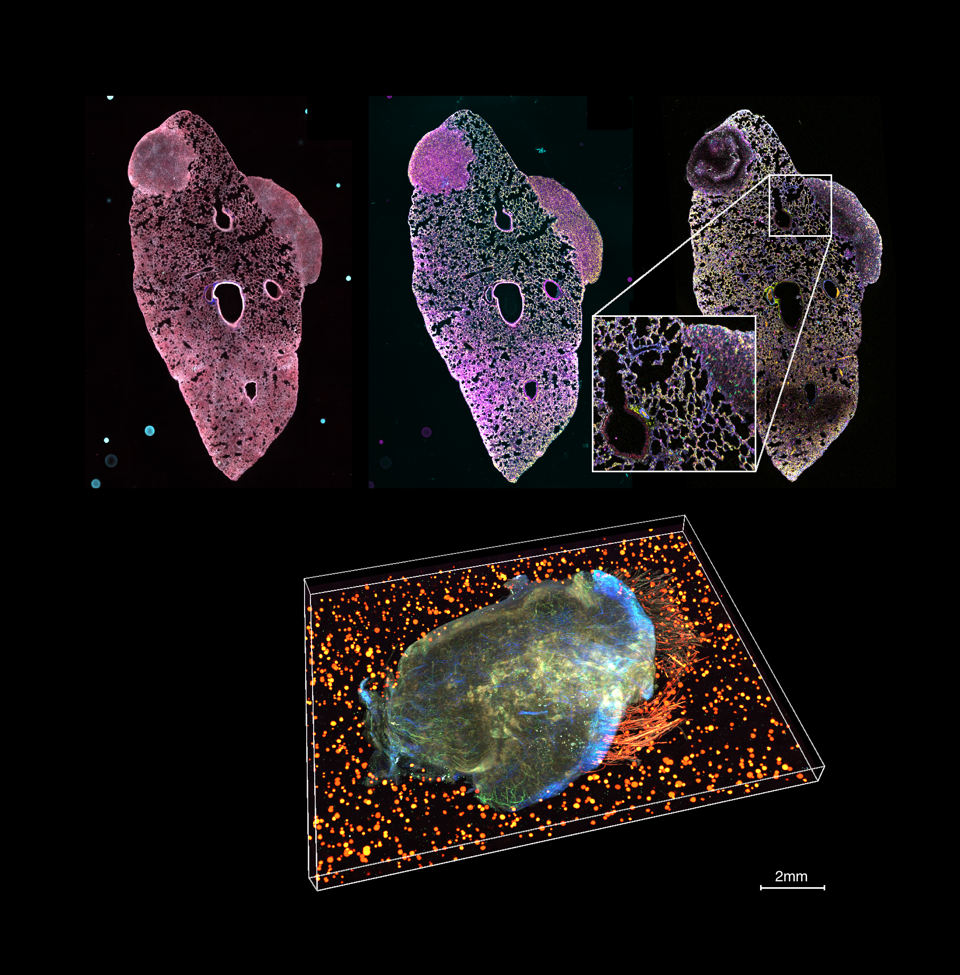Announcing £5.25m funding for SPACE from Cancer Grand Challenges team IMAXT
In a first for the initiative, we’re announcing £5.25m in phase two funding from Cancer Research UK to members of Cancer Grand Challenges team IMAXT to establish a Spatial Profiling and Annotation Centre of Excellence (SPACE).
Led out of University of Cambridge by Professor Greg Hannon and Dr Dario Bressan (Cancer Research UK Cambridge Institute) and Dr Nicholas Walton (Institute of Astronomy), SPACE will open up IMAXT’s cutting-edge spatial biology platform and establish collaborations with other scientists to enable them to investigate tumours in 3D.
Thanks to this continued funding from Cancer Grand Challenges, the IMAXT team is now making its data generation and analysis infrastructure available to the scientific community through SPACE.
The Cancer Research UK funding, through Cancer Grand Challenges, will specifically support the SPACE-Hub laboratory and SPACE analysis platform, which includes and combines most available technologies for spatial molecular profiling of tumours.
The continued collaboration between the cancer and astronomy researchers from the IMAXT team will ensure the maintenance and development of all critical aspects of the platform – from technical and scientific expertise to instrumentation, computing, and data analysis – to allow SPACE to continue to function at the forefront of the spatial omics field. It is hoped that expanding access to the technology to other scientists will accelerate the pace of new discoveries in cancer and lead to the development of new ways to use the technology in a clinical setting.
Space is powering our daily lives, from satellite navigation to weather forecasts and climate monitoring. This collaboration between the cancer and astronomy teams in the IMAXT project is another real-world example of how space science and technology is bringing benefits to people here on Earth.
Thanks to this partnership, the same science and technology that mapped the Milky Way may soon have a positive impact on people battling cancer, and could support doctors to provide better, faster treatment.
Pushing the field beyond its current thinking
In 2015, Cancer Grand Challenges set eight challenges predicated on emerging concepts and important questions across cancer research. Subsequently, it funded four teams against three challenges: the need for mapping tumours in 3D at the cellular and molecular level, to distinguishing between cancers that need treating or don’t and understanding how unusual mutation patterns are induced by cancer-causing events.
Since 2017, Cancer Grand Challenges team IMAXT alongside teams Rosetta, PRECISION and Mutographs have been making transformative impact in cancer research through global team science. This year, those teams’ Cancer Grand Challenges awards came to an end. SPACE is part of our commitment to democratise the technologies developed by IMAXT.
Led by Professor Greg Hannon, IMAXT was a global team who tackled the 3D tumour mapping challenge. To achieve their ambitious goal, the team brought together experts and pioneers from fields as diverse as medicine and astronomy, virtual reality, computer sciences and statistics, and molecular biology.
Tackling the challenge
The team developed a novel approach to produce 3D maps of the tumour micro-environment, in which each cell is identified and fingerprinted by measuring its molecular make-up. They achieved this by combining multiple technologies including 3D microscopy, single-cell genomics and transcriptomics, and spatial omics.
The data from each analysis method is integrated together, enabling researchers to interact with a comprehensive 3D model of cancer. Scientists and clinicians can immerse themselves inside a tumour, visualising the relationships between cells and conducting real-time 3D analyses with the ultimate goal of improving patient diagnosis and treatment.
This is facilitated by a groundbreaking new virtual reality viewer and analysis tool developed by the team, Project Theia, that is capable of real-time processing of single-cell spatial datasets containing millions of cells, enabling end-to-end analysis directly within the VR environment.
A commitment to global collaboration
These efforts have empowered the team to address fundamental questions in cancer biology that otherwise would not have been possible.
SPACE represents truly cutting-edge technology, allowing unprecedented exploration of the complexity of the tumour microenvironment. Importantly, its application has already yielded novel insights into cancer biology – and these innovative tools can now also be used to address important clinical questions.
Going forward, a next-generation version of the VR technology will be further developed and commercialised by Suil Vision, a start-up company launched by IMAXT team members and Cancer Research Horizons, with the help of an investment from Cancer Research Horizons.
SPACE is funded by Cancer Research UK through Cancer Grand Challenges. Additional support for the SPACE project has been provided by the UK Space Agency through their funding of the development of imaging and analysis techniques at the IoA, Cambridge for a range of space science missions. These have been successfully applied to spatial imaging data through the IMAXT and are ready for wider use in SPACE.

